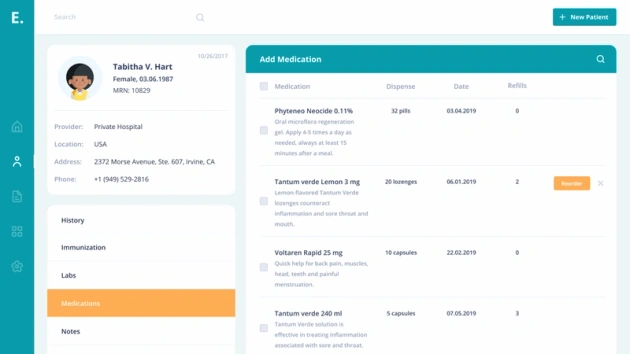We hear about progress all the time. New tools, smarter treatments, faster diagnostics. But walk into many veterinary clinics today, and the first thing you’re handed is still a clipboard and a pen.
Paper forms, manual entries, printed charts – these remain the routine. It’s not because better options don’t exist. It’s because switching to them hasn’t felt urgent. But the time wasted on manual admin, and the errors it creates, are becoming impossible to overlook.
Veterinary-specific EHR systems fix this. With them, notes are searchable, schedules are synced, and data entry happens once, not five times. What’s more, they make it easier to track patient history, preferences, and treatments – which means more personalized care, not just faster routines.
Keep reading to see how EHR fits into real clinics, what problems it solves immediately, and why the switch is simpler than most think.
What do numbers say?
Real numbers tell the story better than any promise. A report by Global Market Insights shows the following picture.
The veterinary EHR market is no longer a niche. In 2024, it’s worth over $600 million, and it’s expected to more than triple by 2034 – hitting $2.1 billion.
What’s driving it? Not just technology, but demand. Over 70% of U.S. households now own pets, and these owners expect the same level of care (and record-keeping) they get at their own doctor’s office.
Clinics that treat small animals – dogs, cats, rabbits, and the like – lead the way. It makes sense: this segment keeps growing, and pet owners are asking for more than just annual shots. They want check-up histories, digital access to records, even reminders for routine care.
Another shift? Most clinics now prefer cloud-based systems. These don’t need bulky servers or constant IT support. Records stay safe, backed up, and available from anywhere – whether that’s the front desk, the exam room, or a laptop at home.
In 2024, cloud-based solutions made up over 70% of the EHR market, and that number keeps rising, fueled by remote care and mobile vets.
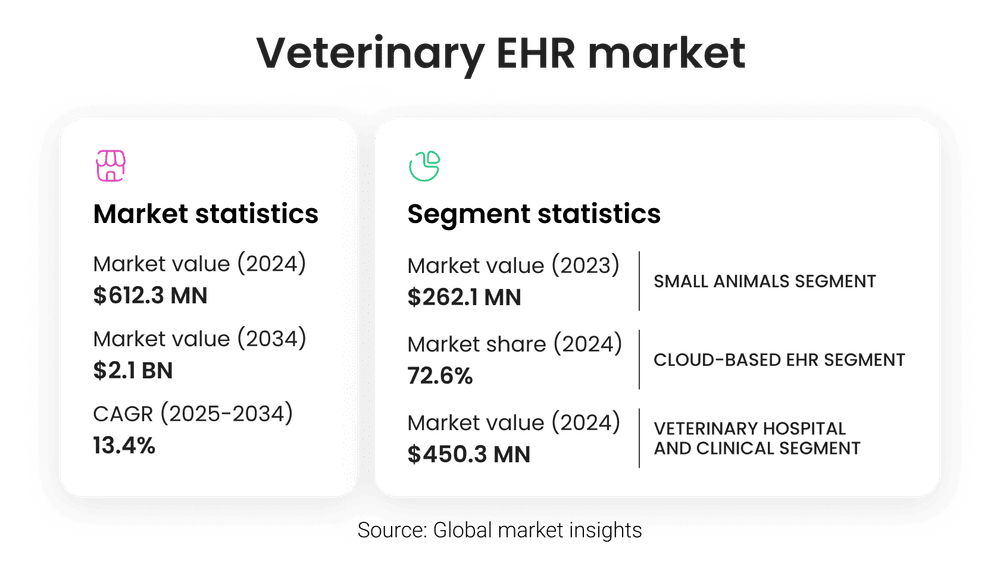
What exactly is veterinary EHR?
An Electronic Health Record (EHR) is a digital system that replaces paper charts. It tracks a pet’s full medical history – vaccines, lab results, treatments, owner communications – and integrates everything into one searchable, updatable file.
Unlike basic record-keeping, EHRs automate tasks (e.g., reminders for overdue tests) and allow secure sharing between clinics, specialists, or telehealth providers.
For example, a vet can review a dog’s past X-rays, check prescriptions, schedule a follow-up, and add a new note – all within the same interface. No jumping between tools. No lost files.
And while EHRs save time, their real value shows up in quality of care. With better visibility into a pet’s medical history, vets can make quicker, more informed decisions.
EHR vs. EMR
Some still mix up EHR with EMR – and fair enough, they sound similar. But there’s one key difference: reach.
EMRs (Electronic Medical Records) are mostly used within a single clinic. They store information from one provider and rarely allow for data exchange.
EHRs, on the other hand, are built for sharing. EHRs keep the information – whether it’s a referral, a specialist consultation, or a change in clinic – flowing without gaps or repeated forms.
Discover more differences in the image below:
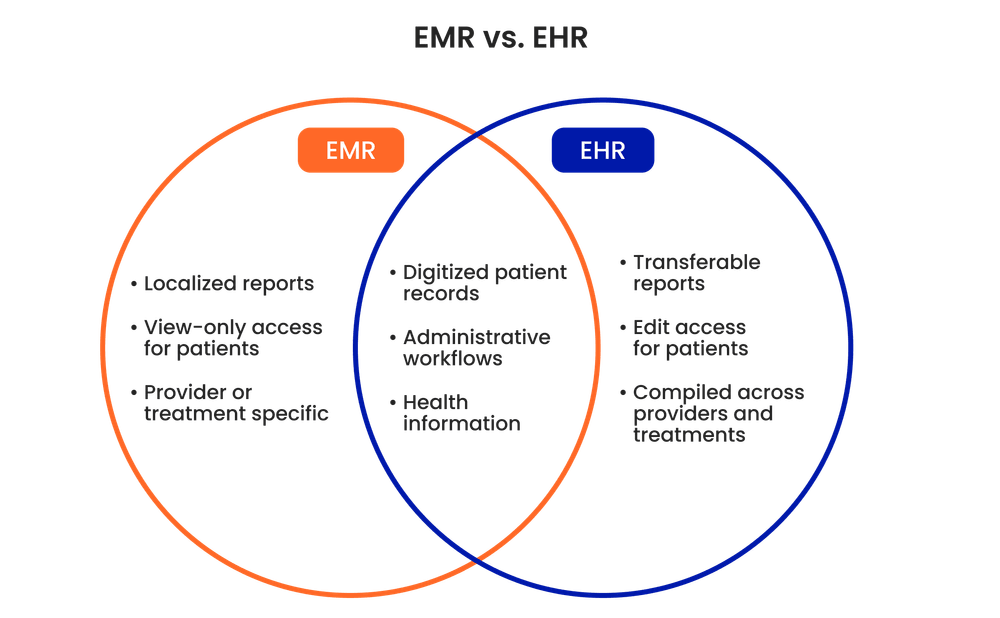
In short: EMR helps you store. EHR also helps you share, track, and manage.
Why choose EHR?
Here’s what changes when you switch from paper to a system designed for vets:
1. Faster, safer consultations
With instant access to complete patient history, test results, and treatment plans, vets spend less time flipping through records and more time focusing on the patient. This minimizes the chance of medical errors and speeds up decision-making – especially when every second counts.
2. Fewer missed appointments
Automated reminders and online scheduling options reduce no-shows. Clients get notified about upcoming visits, and your front desk spends less time on phone calls. It’s a simple fix that improves time management and clinic efficiency.
3. Better stock control
Running out of vaccines or essential supplies mid-shift? EHRs with inventory tracking flag shortages before they become problems. This ensures your clinic runs smoothly and avoids treatment delays due to missing items.
4. Smarter financial tracking
Invoicing, payment processing, and debt follow-ups happen in one place. That means fewer billing errors and less time spent on paperwork. Plus, with reports on revenue trends, you can spot where the clinic earns and where it leaks.
5. Stronger client relationships
Client portals let pet owners access their animal’s medical records, vaccination timelines, and appointment history. This builds trust, keeps them involved in care, and makes them more likely to come back – or recommend you.
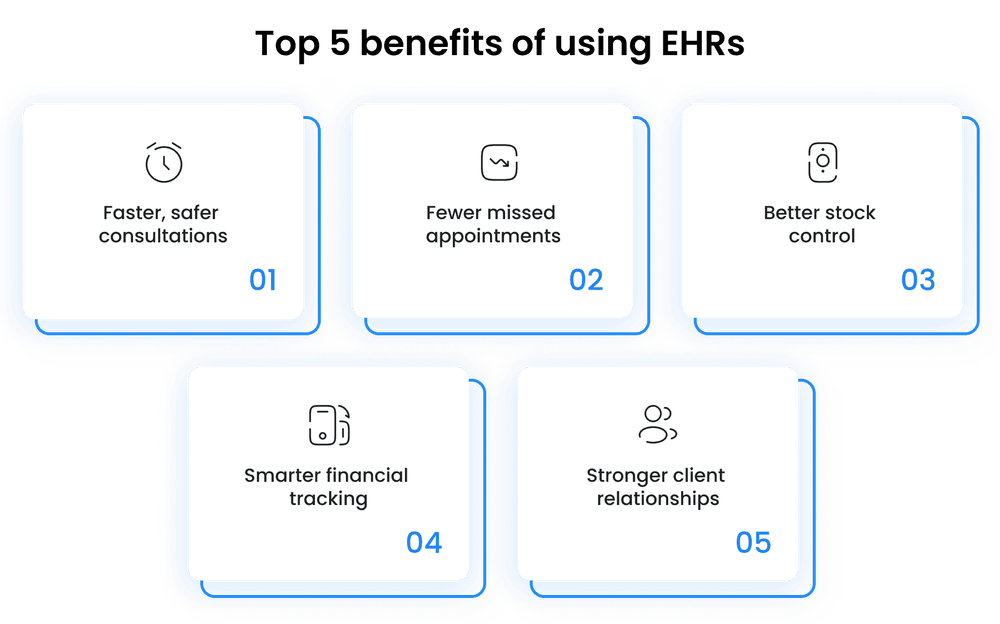
What can be inside EHRs?
EHRs traditionally have a set of features that are basic and others that are considered extras. A basic set usually includes the following:
- Patient records management
Digital records replace paper files, offering a centralized location for all patient information. This includes medical history, vaccination schedules, and treatment plans. Having all data in one place reduces the risk of lost or incomplete records and allows for quick access during consultations.
- Appointment scheduling
Integrated calendars help manage appointments efficiently. They allow for easy booking, rescheduling, and reminders, reducing no-shows and optimizing the clinic’s workflow.
- Billing and invoicing
Automated billing systems streamline the payment process. They generate invoices based on services rendered, track payments, and manage outstanding balances, improving financial management.
- Inventory management
Real-time tracking of medical supplies ensures that the clinic is always stocked with necessary items. It prevents overstocking or running out of essential supplies, which can disrupt services.
- Lab integration
EHRs can integrate with laboratory systems to receive test results directly. This speeds up diagnosis and treatment planning by reducing the time spent waiting for results.
- Reporting and analytics
Built-in analytics tools help monitor clinic performance. They provide insights into patient demographics, treatment outcomes, and financial metrics, aiding in strategic decision-making.
Advanced EHR features that enhance care
In addition to these features, there are advanced options that, while not essential, can significantly enhance the quality of care and client satisfaction:
- Telemedicine capabilities
EHRs with telemedicine features allow for remote consultations. This is particularly useful for follow-up appointments or for clients who cannot visit the clinic easily.
- Client communication portals
Secure portals enable clients to access their pet’s medical records, schedule appointments, and communicate with the clinic. This transparency builds trust and encourages proactive pet care.
- Mobile access
Mobile-compatible EHRs allow veterinarians to access patient information on-the-go. This flexibility is beneficial for home visits or emergencies outside the clinic.
- Customizable templates
Templates tailored to specific species or conditions streamline data entry. They ensure that all relevant information is captured consistently, improving record accuracy.
- Decision support tools
These tools provide evidence-based recommendations during diagnosis and treatment planning. They assist in making informed decisions, enhancing patient outcomes.
- Integration with wearable devices
Some EHRs can integrate with wearable devices that monitor pet health metrics. This continuous data collection supports proactive care and early detection of health issues.
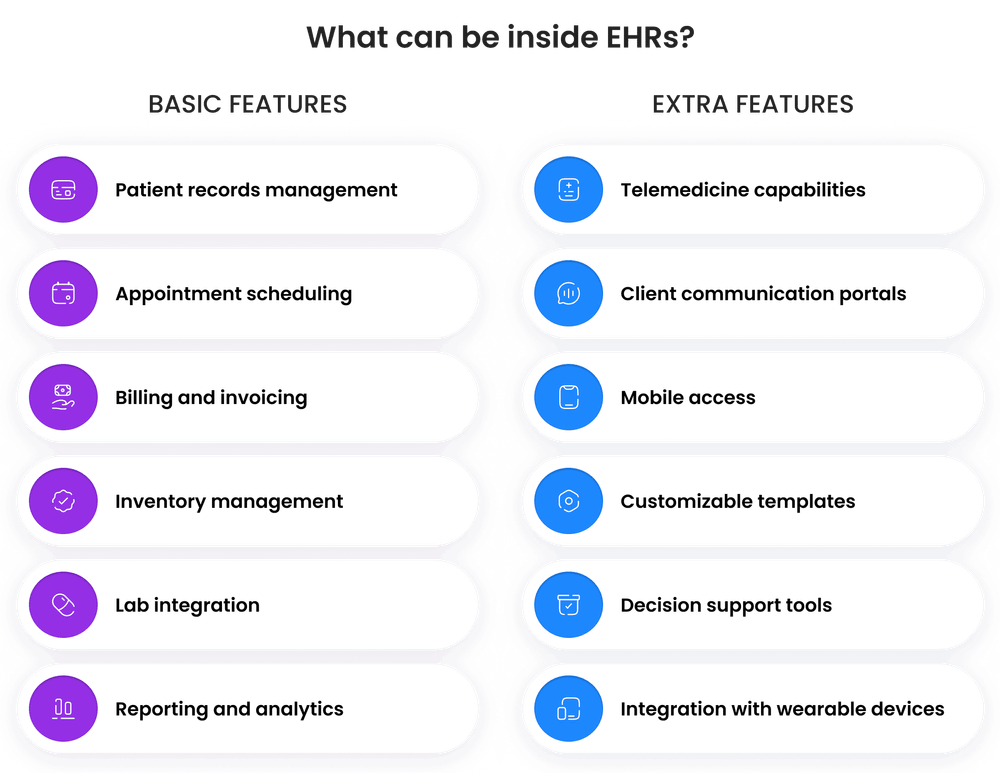
Off-the-shelf EHR or custom?
Choosing between a ready-made EHR system and a custom-built one comes down to your clinic’s current needs and future ambitions.
Off-the-shelf EHRs work well for many clinics, especially those just starting out. They’re affordable, quick to set up, and cover the basics – patient records, scheduling, billing. If your workflow fits within their pre-built structure, they can be a smart, low-fuss solution.
But there’s a trade-off: they often lack flexibility. Need specialized templates for exotic animals? Want deeper integration with your lab equipment? You might hit limits.
Custom EHRs, on the other hand, are built around your needs. They adapt to your workflow, not the other way around. Specialty clinics, high-volume practices, or mobile vets benefit most – think breed-specific treatment plans, custom reporting, or GPS routing for house calls.
The upfront investment is higher, but over time, the efficiency gains (and fewer workarounds) often justify the cost.
How AI changes the way an EHR solution works
AI is another modern “feature” that’s quietly reshaping the way EHR systems work. Here’s how it is making a real difference in three key areas:
Veterinary care quality
There are rare cases when medical workers, for example, forget to follow up on a diabetic cat’s glucose levels or miss a vaccine booster because the reminder got buried in paperwork. AI fixes that. The technology can:
- Track trends (like weight changes or lab results) and alerts you before small issues become big problems.
- Auto-schedule follow-ups so nothing falls through the cracks.
- Personalize treatment plans based on breed, age, and medical history.
As a result you have happier pets, more confident vets, and clients who trust you’ve got everything under control.
Discover how we created an AI solution for the veterinary business
Our solution automates patient intake, symptom assessment, and appointment scheduling, ensuring pets receive timely and appropriate care. The results:
- 50% reduction in front-desk workload
- 30% faster check-in
- 20% improvement in appointment utilization

Clinical decision support
AI-powered EHRs don’t just store data – they help make sense of it. By analyzing patient records, test results, and clinical guidelines, AI can suggest possible diagnoses, highlight potential risks, or recommend treatment options.
This gives veterinarians more confidence in their decisions, especially in complex cases, and reduces the time spent digging through records for insights.
For example, a labrador comes in with recurring ear infections. Instead of relying on memory or flipping through past notes, your EHR instantly flags that this breed is prone to allergies – and suggests testing for underlying causes.
Patient safety
Mistakes happen – especially when you’re rushed. But what if your EHR could catch them before they do harm?
EHRs with built-in AI can flag potential errors before they happen. For example, they might catch a dosage that’s too high for a small breed or raise a red flag if a new prescription conflicts with existing medications.
This kind of early warning system helps reduce the risk of mistakes and improves overall patient safety – something both clients and staff care deeply about.
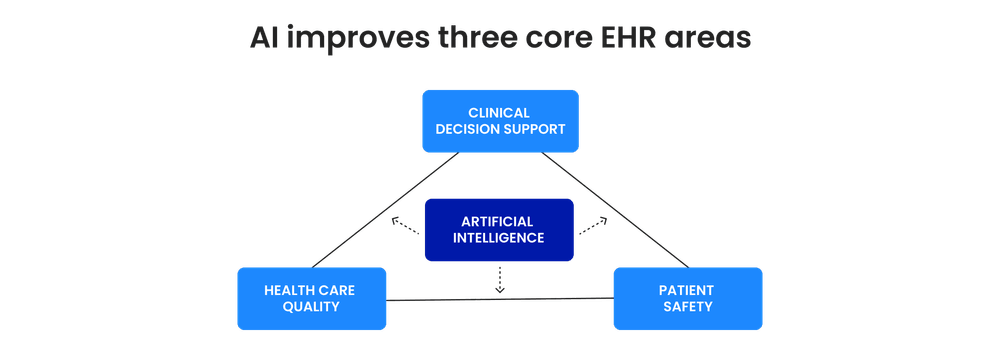
Bottom line
Do you want to upgrade your existing EHR with new features, improve performance, or bring in AI to make your staff’s work easier? We’ve done it before, and can help now.
If you’re interested in building an EHR system from scratch, we’ll start by analyzing your operations, team, and strategy, then design and develop a solution that supports your goals.
Automating tasks, spotting trends, and preventing errors – this is just the beginning.
What else can AI do for your veterinary business?

